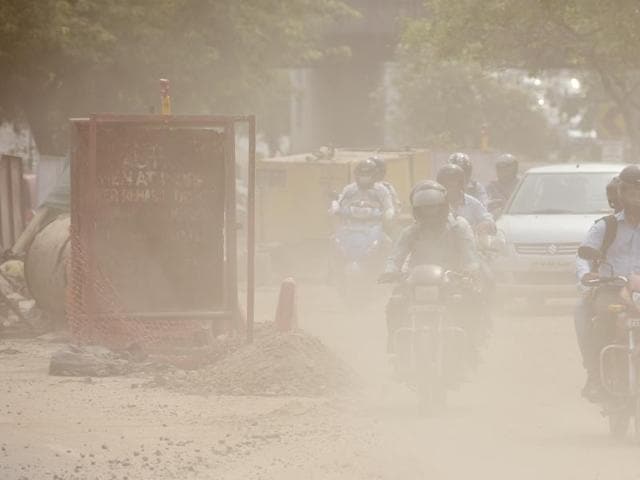Delhi chokes, six monitoring stations record very poor air quality
The acceptable levels of PM 2.5 are 60 micrograms per cubic metre and PM 10 are 100 micrograms per cubic metre.
Delhi’s air quality worsened on Tuesday with the six stations that monitor particulate matter(PM) 2.5 and 10 falling in the ‘very poor’ category.

The overall levels of PM 2.5 (particulate matter with diameter less than 2.5 micrometres) and PM 10 (particulate matter with diameter less than 10 micrometres), were settled at 120.8 and 248 micrograms per cubic metre, as per System of Air Quality and Weather Forecasting and Research (SAFAR) around 5.30pm.
By late evening, the PM 10 levels went down to 199 micrograms per cubic metre, making the air more breathable.
The acceptable levels of PM 2.5 are 60 micrograms per cubic metre and PM 10 are 100 micrograms per cubic metre.
Through most part of Tuesday, SAFAR’s Dhirpur, Pitampura, Delhi University, Pusa Road, Mathura Road and Airport (T3) stations recorded ‘very poor’ air quality index.
After a spell of plentiful monsoon, last week’s air quality hovered between moderate and poor categories.
SAFAR’s mobile application said that ‘very poor’ air quality may give rise to respiratory illnesses and ‘poor’ quality may cause breathing discomfort on prolonged exposure. Sensitive people are advised to take precautions as their health is more likely to be affected.
SAFAR officials said that the coming weeks, especially after Diwali, are likely to get worse.
“The pollution from crop burning in Haryana and Punjab are yet to gain pace and reach Delhi. The Diwali pollution levels will also add to the pollution levels,” said a SAFAR official.
Farm fires in neighbouring Punjab, Haryana and smokes from landfill sites like the one in Bhalaswa are also major contributory factors in this regard.
Read: No clear skies in Delhi as pollution level remains high even after monsoon
The official said that a forecast of the post-Diwali pollution levels will be given out by October 27.
Wednesday’s forecast says that the air quality is likely to remain poor.
With the onset of winters, the Delhi government has also started measures to control the rise of pollution levels in the Capital.
Deputy chief minister Manish Sisodia wrote a letter to school principals on Tuesday informing them of the “manifold increase” in pollution levels due to the mindless use of firecrackers. In the letter, Sisodia asked them to educate their students against the rampant use of crackers.
“The ‘No Use of Firecrackers’ campaign may be spearheaded by your eco-clubs through nukkad nataks, padyatras, workshops, etc, involving the children of your school,” Sisodia wrote.
Stay updated with all top Cities including, Bengaluru, Delhi, Mumbai and more across India. Stay informed on the latest happenings in World News along with Delhi Election 2025 and Delhi Election Result 2025 Live, New Delhi Election Result Live, Kalkaji Election Result Live at Hindustan Times.
Stay updated with all top Cities including, Bengaluru, Delhi, Mumbai and more across India. Stay informed on the latest happenings in World News along with Delhi Election 2025 and Delhi Election Result 2025 Live, New Delhi Election Result Live, Kalkaji Election Result Live at Hindustan Times.





